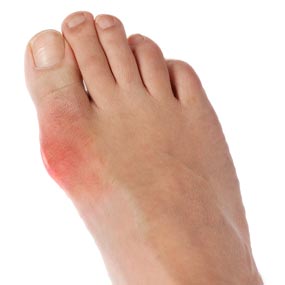You can develop gout if you have too much uric acid in your body. Uric acid is a chemical that everyone has in their blood. It's a waste product formed from substances called purines, which are found in every cell in your body and certain foods. Uric acid is formed in your body when the purines in foods you eat are broken down. It’s also formed when old cells in your body are broken down and replaced by new cells. Excess uric acid is passed through your kidneys and out of your body in your urine. However, the level of uric acid in your blood can rise if:
- your kidneys don't pass uric acid quickly enough
- your body produces too much uric acid
If the level of uric acid in your body is too high, it can form tiny crystals that collect in your tissues, particularly in and around your joints. This is what may cause your swelling and pain. These crystals tend to form at a cooler body temperature, which is why gout is more common in your fingers and toes.
You may have high levels of uric acid, but not get gout, or you may get gout, but not have high levels of uric acid. It's not known why some people develop gout and others don't. However, there are certain factors that can increase your likelihood of getting gout. You're more likely to get gout if you:
- are a man aged 30 to 60
- are a woman who has been through the menopause
- eat a diet that contains high levels of purines, which are found in red meat, seafood and some other foods
- drink too much alcohol, especially beer
- don’t drink enough fluids daily and become dehydrated
- take certain medicines, such as diuretics (water tablets), which increase the flow of urine from your body
- have a family history of gout
- have kidney disease meaning that your kidneys don't pass enough uric acid out in your urine
- are overweight, have diabetes or high blood pressure
- have psoriasis (itchy, dry and flaky skin), which can sometimes cause your body to produce too much uric acid
- are taking certain types of cancer medicines


